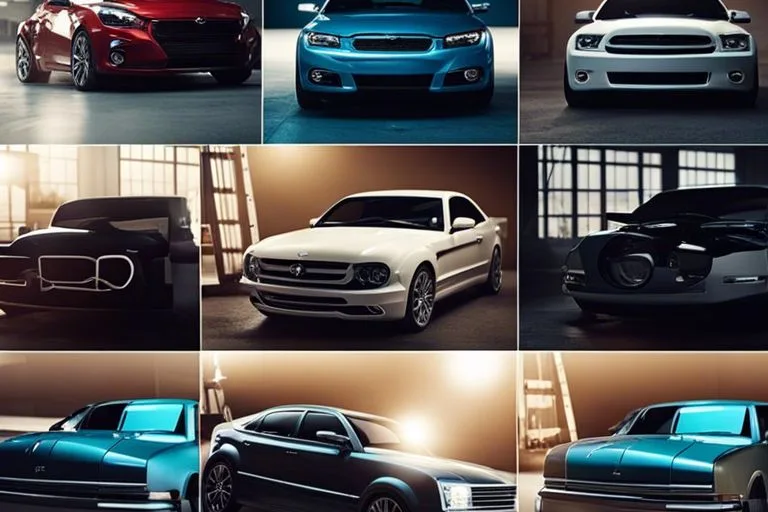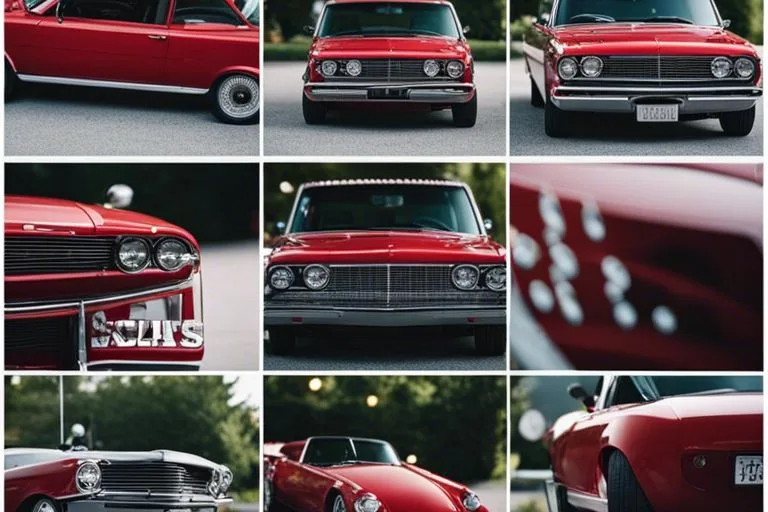Many drivers face the daunting task of dealing with collision repair costs after unfortunate accidents. Understanding the intricacies of these expenses is crucial for being prepared and making informed decisions. In this comprehensive guide, we will break down everything you need to know about collision repair costs, from the factors that influence them to how to navigate insurance claims and estimates. Let’s examine into the world of collision repair expenses with authority and clarity.
Key Takeaways:
- Collision Repair Costs Vary: The cost of collision repair can vary greatly depending on factors such as the extent of damage, parts needed, labor costs, and the specific make and model of the vehicle.
- Insurance Coverage Plays a Role: Understanding your insurance coverage is crucial when it comes to collision repair costs. Different policies may cover different types of damage and have varying deductibles.
- Choose a Trusted Repair Shop: It’s important to choose a reputable and experienced repair shop for your collision repair needs. A reliable shop can provide quality workmanship, accurate estimates, and help navigate the insurance process.
Understanding Collision Repair Costs
Labor Charges
To accurately estimate collision repair costs, labor charges play a crucial role. Labor charges are typically calculated based on the number of hours technicians spend working on your vehicle. It includes tasks such as disassembly, repair, painting, and reassembly. Labor rates can vary depending on the auto body shop’s location, expertise, and overhead expenses. Be sure to inquire about the labor rates before proceeding with the repairs to avoid any surprises on your final bill.
Parts and Materials
In terms of collision repair costs, parts and materials are another significant factor to consider. The cost of parts can vary based on the make and model of your vehicle, the extent of the damage, and whether the parts are original equipment manufacturer (OEM) or aftermarket. OEM parts are sourced from the vehicle’s manufacturer and are typically more expensive, but they offer a higher quality and better fit. On the other hand, aftermarket parts are produced by third-party manufacturers and are usually more affordable but may vary in quality.
Types of Collisions
The cost of collision repair can vary greatly depending on the type of collision. Understanding the different types of collisions will help you better anticipate repair costs. Here are the main types of collisions:
| 1. Rear-End Collisions | 4. Side-Impact Collisions |
| 2. Head-On Collisions | 5. Rollover Collisions |
| 3. Fender Bender Collisions | 6. Multi-Vehicle Collisions |
Minor Impacts
Now, minor impacts such as fender benders may seem harmless at first glance, but they can still result in significant repair costs. Even a small dent or scratch can require paintwork and panel replacement, adding up to hundreds of dollars in expenses.
Major Accidents
Even major accidents can result in costly repair bills. The extent of the damage from major collisions can be extensive, involving major structural repairs, component replacements, and labor-intensive work. You can expect repair costs to be in the thousands, especially if there is damage to critical components such as the engine or frame.
Repair vs. Replacement
Cost Comparisons
Now, let’s compare the costs of repairing versus replacing a damaged part on your vehicle. The table below breaks down the costs for both options:
| Repair | Replacement |
| Lower upfront cost | Higher upfront cost |
| May require additional repairs later | Often comes with a warranty |
| Can be a temporary fix | Usually a long-term solution |
Decision Factors
When deciding between repairing or replacing a damaged part, there are a few key factors to consider:
- The extent of the damage
- The age and condition of your vehicle
- Your budget for repairs
Replacement can sometimes be the better option if the damage is extensive, your vehicle is older, or if the repair costs are significant. However, repairing may still be a viable choice for minor damages or if you are on a tight budget. Any decision should be based on a combination of these factors.
Cost is a significant factor when it comes to collision repair. It is important to weigh the costs of repair and replacement against each other to make an informed decision. Keep in mind that while repairing may seem like a more budget-friendly option initially, it could end up costing you more in the long run if additional repairs are needed. On the other hand, replacing a damaged part may have a higher upfront cost but could provide a more permanent solution. Any decision should be made after careful consideration of all these factors.
Insurance Coverage Influence
Claim Filing
For successful collision repair cost coverage through insurance, it’s crucial to file a claim promptly. Delaying the claim filing process can complicate matters and may result in the denial of coverage. Make sure to provide accurate information about the incident, including photos and any relevant documentation to support your claim.
Policy Deductibles
If your insurance policy includes a deductible for collision repairs, you will be responsible for paying that amount out of pocket before your insurance coverage kicks in. The deductible amount can vary depending on your policy, so it’s important to review your insurance paperwork and understand what your financial obligations are in the event of a collision.
The deductible for collision repair coverage is typically set when you purchase your insurance policy. Lower deductibles usually result in higher monthly premiums, while higher deductibles can lower your premium costs. It’s important to consider your financial situation and driving habits when choosing a deductible amount that works for you.
Estimating Repair Expenses
Online Tools
There’s no shortage of online tools available to help you estimate repair expenses for your vehicle. Websites and apps such as RepairPal, AutoMD, and Kelley Blue Book offer cost calculators based on your vehicle make, model, location, and the type of repair needed. These tools can give you a rough idea of what to expect to pay for parts and labor, helping you to budget accordingly.
Professional Quotes
Online tools can provide you with a good starting point, but for a more accurate estimate, it’s best to seek professional quotes from local collision repair shops. Contact several reputable shops in your area and provide them with as much detail as possible about the damage to your vehicle. They will inspect the damage in person and provide you with a detailed quote outlining the cost of parts, labor, and any additional services required for the repair.
Professional quotes from collision repair shops may come with a fee, but it’s a worthwhile investment to ensure you have a comprehensive understanding of the repair costs involved. Be sure to ask about warranties on the work performed and inquire about any additional fees that may arise during the repair process.
Common Repair Procedures
Body Filler Application
Many collision repair procedures involve the application of body filler to repair dents and dings on the vehicle’s body. You’ll find that skilled technicians use body filler to smooth out imperfections before painting the affected areas, ensuring a seamless finish. It is crucial to apply body filler correctly to achieve a durable and aesthetically pleasing result.
Paint Matching
An crucial part of collision repair is paint matching, where the goal is to seamlessly blend the new paint with the existing finish to create a uniform appearance. Matching the color, texture, and gloss of the paint is crucial to ensure that the repaired area integrates seamlessly with the rest of the vehicle’s body. This process requires precision and expertise to achieve a flawless finish.
Do-It-Yourself Repairs
Pros and Cons
| Pros | Cons |
| Cost-effective | Time-consuming |
| Learn new skills | Risk of causing further damage |
| Control over the repair process | May not have access to specialized tools |
| Sense of accomplishment | Quality of repair may not match professional standards |
Material Costs
When tackling collision repairs on your own, it’s important to consider the material costs involved. You will need to purchase paint, primer, body filler, sandpaper, and any replacement parts necessary for the repair. These costs can vary depending on the extent of the damage and the quality of materials you choose.
Costs
While DIY repairs can save you money on labor costs, it’s vital to factor in the costs of materials and tools needed for the job. Before starting any DIY repair project, make sure to do thorough research to understand the full scope of the work and budget accordingly. Remember that cutting corners on materials or tools can compromise the quality of the repair.
Frame Damage Considerations
Repairability Assessment
Now, when your vehicle sustains frame damage, it is crucial to assess its repairability. This step involves a thorough examination by a trained professional to determine the extent of the damage and whether it can be safely repaired.
Safety Implications
You should be aware that frame damage can compromise the structural integrity of your vehicle, putting you at greater risk in the event of another collision. If left unrepaired, it can lead to further safety hazards and impact the overall performance of your car.
With this in mind, it is important to address frame damage promptly to ensure the safety of both yourself and others on the road. Ignoring the implications of frame damage can have serious consequences, both in terms of your safety and the cost of future repairs.
Paintless Dent Removal
Process Overview
All paintless dent removal procedures start with a thorough assessment of the dent to determine if the damage can be repaired using this method. Skilled technicians use specialized tools to carefully massage the dent out from the inside, preserving the vehicle’s original paint finish. The process typically does not require any fillers, sanding, or repainting, making it a quicker and more cost-effective solution for minor dents and dings.
Cost Effectiveness
Paintless dent removal is often a more cost-effective option compared to traditional auto body repair methods. Since it eliminates the need for expensive materials like paint and reduces the labor time involved in the repair process, the overall cost is significantly lower. Additionally, the technique is environmentally friendly as it does not produce harmful fumes or waste materials, making it a sustainable choice for dent repairs.
With advancements in technology and increased demand for paintless dent removal services, many auto body shops now offer this option to their customers. It is a preferred method for minor dent repairs as it maintains the vehicle’s original factory finish and helps retain its resale value. Moreover, the convenience of a faster turnaround time makes it an attractive choice for those looking to restore their vehicle’s appearance quickly and affordably.
Parts: OEM vs Aftermarket
Quality Differences
Not all parts are created equal when it comes to collision repair. OEM (Original Equipment Manufacturer) parts are made by the vehicle’s maker and are designed to fit perfectly with your car. On the other hand, aftermarket parts are produced by third-party manufacturers and may not always meet the same quality standards as OEM parts. The quality of the parts used in your collision repair can impact the safety and performance of your vehicle, so it’s important to consider the differences between OEM and aftermarket parts.
Price Disparities
You’ll find that aftermarket parts are generally less expensive than OEM parts when it comes to collision repair. This price difference can be significant, especially if you are paying for the repairs out of pocket. While aftermarket parts can help you save money upfront, it’s necessary to consider the potential long-term costs associated with lower quality parts.
Aftermarket parts may not have the same level of precision or durability as OEM parts, which could result in more frequent replacements or even further damage to your vehicle. It’s necessary to weigh the cost implications of aftermarket parts against the potential risks to your safety and the integrity of your vehicle.
The Complete Guide To Collision Repair Costs
Repair Cost Variance
To understand the collision repair costs of luxury versus economy vehicles, it is vital to consider the repair cost variance. Luxury vehicles often come equipped with advanced technology, specialized materials, and unique parts that can significantly drive up repair costs compared to economy vehicles. The complexity of repairs and the availability of parts can also contribute to higher expenses when fixing luxury vehicles.
Brand Specificity
To investigate deeper into the collision repair costs of luxury and economy vehicles, brand specificity plays a crucial role. Luxury vehicle manufacturers often use exclusive parts, which may need to be sourced directly from the dealership. This can result in higher repair costs due to the limited availability and higher price of these specialized components.
For instance, repairing a dent on a luxury vehicle like a BMW or a Mercedes-Benz may be more expensive than repairing a similar issue on an economy vehicle like a Toyota or a Honda. The brand specificity of luxury vehicles can lead to higher repair costs, as even minor repairs may require specialized parts and labor.
Mechanical Repairs Impact
Engine Damage
To understand the impact of mechanical repairs on collision costs, it’s crucial to consider engine damage. Engine damage can occur due to the force of a collision, causing issues with internal components such as the pistons, valves, or crankshaft. Repairing engine damage can be costly, as it often involves extensive labor and sourcing of specific parts. This can significantly impact collision repair costs, depending on the extent of the damage and the make and model of the vehicle.
Suspension Issues
Unlike body damage that is visible to the naked eye, suspension issues may not always be apparent after a collision. However, they can have a significant impact on repair costs. Suspension damage can affect the vehicle’s handling, stability, and overall safety. Ignoring suspension issues can lead to further damage to other components of the vehicle, ultimately resulting in higher repair costs.
Plus, proper diagnosis and repair of suspension issues require specialized knowledge and equipment. This can add to the overall cost of collision repairs, but it is important to ensure the vehicle is restored to its pre-accident condition in terms of both safety and performance.
Technological Advances
Sensor Re-calibration
Advances in collision repair technology have introduced the need for sensor re-calibration after repairs are completed. With modern vehicles equipped with advanced driver-assistance systems (ADAS), sensors play a crucial role in ensuring the safety and functionality of the vehicle. Proper re-calibration of these sensors is crucial to maintain the accuracy of these systems and prevent potential malfunctions.
Hybrid Vehicle Complexities
You’ll find that repairing hybrid vehicles can be more complex than traditional gas-powered vehicles due to their dual power sources and unique systems. For instance, hybrid vehicles have high-voltage components that require special training and equipment to work on safely. Additionally, the integration of electric motors and battery systems adds another layer of complexity to collision repairs.
Regional Cost Differences
Labor Cost Variability
Cost variations in labor rates are a significant factor in regional differences in collision repair costs. Labor costs can vary greatly depending on the region, with urban areas typically commanding higher rates compared to rural locations. Factors such as cost of living, demand for skilled technicians, and local market competition can all contribute to the variability in labor rates.
Parts Availability
Assuming equal labor costs, differences in parts availability across regions can also impact collision repair costs. Certain regions may have easier access to a wide range of parts, leading to shorter repair times and potentially lower costs for parts. On the other hand, areas with limited access to parts may experience delays in repair timelines and higher costs due to sourcing parts from farther locations.
Availability of parts can also be affected by the proximity of distribution centers and suppliers to the repair shops. Regions with better infrastructure for parts distribution tend to have quicker access to parts, resulting in more efficient repairs and lower overall costs for consumers.
Timing: Repair Duration
Turnaround Time
All collision repairs have different turnaround times based on the extent of the damage, availability of parts, and the workload of the auto body shop. It is necessary to get an estimated timeline for your specific repair before proceeding.
Rental Car Costs
Any collision repair that requires your vehicle to be in the shop for an extended period may incur rental car costs. These costs can add up quickly, so be sure to factor them into your overall repair budget.
Rental car costs can vary based on the type of rental car you choose and the length of time you need it. Some auto body shops may offer rental car assistance as part of their services, so it’s worth inquiring about this option.
Increasing Repair Costs
Inflation Effects
Many factors contribute to the increasing repair costs in the collision repair industry. One significant factor is the constant rise in inflation. As the cost of living increases, so do the costs of materials, labor, and overhead expenses for repair shops.
Modern Car Complexities
An important contributor to escalating collision repair costs is the complexities of modern cars. With advanced safety features, intricate computer systems, and specialized materials, repairing a modern vehicle involves a higher level of expertise and technology, leading to increased costs for both parts and labor.
There’s a growing demand for highly trained technicians who are skilled in handling the intricate systems of modern vehicles. This demand can drive up labor costs as shops need to compensate their skilled workers accordingly.
This continuous evolution in automotive technology means that repair shops also need to invest in expensive diagnostic tools and training programs to keep up with the latest developments, all of which contribute to the overall increase in repair costs for consumers.
Negotiating with Repair Shops
Price Breakdowns
Not all repair shops may be upfront about how they come up with their repair costs. When negotiating with repair shops, it’s crucial to ask for a detailed price breakdown. This breakdown should include the cost of parts, labor, and any additional fees. By having a clear understanding of the pricing, you can better assess the reasonableness of the quote and negotiate more effectively.
Warranty Offers
To ensure that you are protected in case something goes wrong with the repairs, warranty offers are important to consider. Some repair shops may offer warranties on the parts and labor involved in the repair. It’s necessary to review the terms and length of the warranty before agreeing to any repairs.
You can also inquire about extended warranties for an additional cost. These extended warranties can provide added peace of mind and protection for a longer period, especially for more substantial repair jobs.
Legal Aspects
Liability Concerns
Keep in mind that when it comes to collision repair, liability is a significant factor to consider. If the repair shop fails to fix the vehicle properly and an accident occurs due to their negligence, they could be held liable for any resulting damages. It’s necessary for both the repair shop and the vehicle owner to understand their respective responsibilities and ensure that repairs are carried out thoroughly.
Aftermarket Parts Regulations
Aspects of collision repair costs also involve understanding aftermarket parts regulations. Regarding replacing parts in a collision repair, using aftermarket components may be a more cost-effective option. However, it’s crucial to be aware of regulations governing the use of these parts to ensure they meet safety and quality standards.
For instance, some insurance companies have specific guidelines regarding the use of aftermarket parts in repairs. It’s important to verify whether the parts being used meet industry standards and have been certified by relevant authorities before proceeding with the repair.
Collision Repair Scams
Recognizing Fraud
Despite efforts to regulate the collision repair industry, fraudulent practices still exist. Look out for signs of fraud such as inflated repair costs, unnecessary repairs, or a reluctance to provide detailed estimates. If the repair shop pressures you to use their services or dismisses your questions, these are red flags that indicate potential fraudulent behavior.
Avoidance Tips
For consumers, it’s crucial to be aware of common collision repair scams and take preventative measures to avoid falling victim. Always ask for multiple estimates from different repair shops to ensure pricing accuracy and legitimacy. Additionally, do your research on the reputation of the repair shop through online reviews and word-of-mouth recommendations before committing to any services.
- Compare estimates from multiple repair shops
- Research the reputation of the repair shop
- Ask for detailed explanations of repair work and costs
Perceiving signs of potential fraud can save you from costly and unnecessary repairs. By staying vigilant and informed, consumers can protect themselves from falling prey to deceptive practices within the collision repair industry.
The Complete Guide To Collision Repair Costs
Industry Trends
After researching the latest trends in the collision repair industry, one thing is clear – technology is rapidly changing the way repairs are done. From the use of advanced diagnostics to the rise of electric vehicles, repair shops must stay up-to-date to meet the evolving needs of customers.
Cost Predictions
Industry experts predict that the cost of collision repairs will continue to rise in the coming years. Factors such as increasing labor rates, expensive parts, and advanced vehicle technology all contribute to this trend. It’s necessary for consumers to be prepared for potential higher repair bills in the future.
This means that insurance companies and repair shops need to work together to find cost-effective solutions for customers without compromising on quality. As vehicles become more complex, repair costs are expected to follow suit, making it crucial for all parties involved to adapt to these changes.
Summing up
In a nutshell, this comprehensive guide has shed light on the intricacies of collision repair costs, covering everything from labor fees to parts pricing and insurance considerations. By understanding the factors that influence repair costs, consumers can make more informed decisions when facing auto damage. It is crucial to obtain multiple estimates, research reputable repair shops, and communicate effectively with insurance providers to ensure a fair and accurate repair cost. By following the tips and advice outlined in this guide, individuals can navigate the complex world of collision repair costs with confidence and clarity.
FAQ
Q: What is collision repair?
A: Collision repair refers to the process of repairing a vehicle that has been damaged in an accident or collision. This can involve fixing body damage, mechanical repairs, and refinishing to restore the vehicle to its pre-accident condition.
Q: How are collision repair costs determined?
A: Collision repair costs are determined based on several factors, including the extent of the damage, the make and model of the vehicle, the cost of parts and materials needed for the repairs, and the labor required to complete the repairs. Additionally, the location of the repair facility and the level of expertise of the technicians can also impact the overall cost.
Q: Are collision repair costs covered by insurance?
A: In many cases, collision repair costs are covered by insurance, depending on the type of coverage you have. Comprehensive insurance typically covers damage from accidents, while liability insurance may not cover collision damage to your own vehicle. It’s important to review your insurance policy and speak with your insurance provider to understand what is covered and what your financial responsibility may be.




